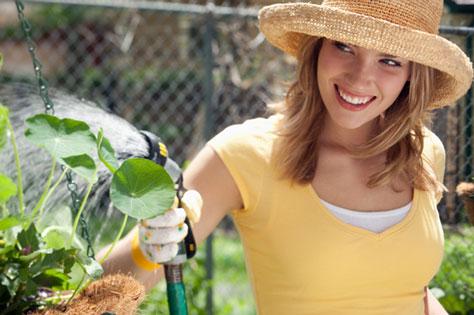But there is still some time for an autumn vegetable garden. Just think about it: no weeds, no heavy watering and few bugs. Autumn is the perfect season to have a little fun, and get some terrific vegies back from your garden.
Some of the best autumn vegetables include spinach, turnips, broccoli, Brussels sprouts, cauliflower, cabbage, endive, rocket, leeks and collards.
Prepare the site
First, tidy up the planting area by cleaning out the remains of the summer garden. Most of the produce will be ready for or beyond harvesting, anyway. Remove crop residue and any weeds, and incorporate some organic compost or well-rotted manure into the soil.
Make a plan
Shorter days, lower light and, to some extent, cooler temperatures slow autumn vegetable growth. The trick is to give the plants enough time to grow quickly, and be ready to harvest before winter sets in. Find the earliest average frost date and work backward to determine when specific plants should go into the ground.
For example, if spinach takes 50 days to mature and your earliest frost date is about mid-May, plant the spinach around mid-March. It's better to plant too early than too late. A local nursery can give you frost dates for your area.
You should also learn what crops are able to handle some frost without being damaged. In fact, some are known to actually "sweeten up" after being exposed to a few light frosts. Brussels sprouts and broccoli are two of the most popular frost-tolerant choices.
Direct sowing versus transplants
Vegetables like spinach, collards, broccoli and cabbage are often seeded directly for autumn crops. But if you're anxious for a faster start, transplants are readily available in garden centres and an easy way for instant satisfaction. Autumn is also prime time for sowing onion sets and garlic cloves for harvest the following spring and summer.
Water and feed
Young seedlings need more frequent, light watering, but once established, most vegetables only need a few centimetres of water a week. Apply early in the morning or after sunset and let the water penetrate deeply into the root zone. As temperatures cool, evaporation slows, so water less. If you need to fertilise, side dress with a slow-release organic cottonseed meal. It's high in nitrogen while also providing some phosphorus and potassium.
Insects and diseases
One of the best parts of autumn gardening is the minimal level of pest insects affecting your plants. But in the unlikely event you find pest damage or activity beyond your threshold of tolerance, use the IPM (integrated pest management) process to treat food crops with the minimum methods that will work. You can keep plants healthy and strong by using row covers to block out insects, encourage beneficial insects to prey on the pests, interplant different vegetables to slow the spread of diseases, rotate crops and remove plant debris and infected material.
Frost protection
Hardy and semi-hardy autumn vegies don't need much frost protection, but carrots, radishes and other root crops should be harvested or mulched heavily before the first hard freeze. Use floating row covers, portable cold frames or even cloches made from one- or two-litre plastic soda bottles with the bottom removed to protect plants overnight. But be sure to vent or remove the covers before the heat of the sun becomes too strong and cooks your plants.
And don't be too quick to pull everything up once the cold ends. Many vegetables held in cold frames start growing again in spring and provide extra early produce and sustenance as you prepare your next garden for summer.

















__small.png)










